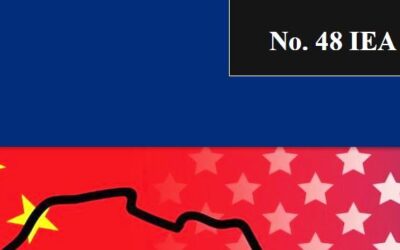Government presented its 2021 Budget Statement and Economic Policy to Parliament on Friday, 12 of March, 2021. IEA submitted some inputs to the Ministry of Finance during the budget preparation in response to a request to CSOs. We also published a paper listing some key policies that we wanted to bring to Government’s attention.
We present our comments on the budget based on our expectations in key areas. Of course, the budget is a big document that covers a lot of ground. Therefore, one can only choose areas that one finds interesting, while recognizing that these may not always coincide with other peoples’ interests. This is an exercise we carry out after every budget in pursuance of our objective of influencing public policy in the interest of Ghana and its citizens.
We recognize that the budget faces the difficult task of balancing the response to Covid-19, including interventions to protect lives and livelihoods, while also trying to restore some growth and stability to the economy. The task is more acute in 2021, with the pandemic still on the rampage. In spite of this difficulty, however, some of the macroeconomic and financial targets do not seem to be sufficiently ambitious. We do not also see sufficiently bold efforts to leverage the country’s resources and capacities to achieve the necessary quantum jumps in our economic and social indicators.
1. Growth targets
Covid-19 severely affected the economy in 2020, with overall growth estimated to be just 0.9%, the lowest for years. In 2021, 5.0% growth is projected. This represents a significant increase, al beit from the low base in 2020. Thereafter, GDP growth is projected to remain virtually flat around 5%. We wonder, however, why it should be so. We are a developing country with abundant untapped natural and human resources and excess production capacities. Therefore, why can’t we leverage these resources and capacities to grow faster so that we can deliver our people from poverty more quickly? If GDP is to grow at an average of 5% and we take out population growth rate of, say, 2% to get per capita GDP growth of 3%, our maths tells us that it will take us 23 years to double our per capita income from its current level of US$2,000 to US$4,000. This is unacceptable! We do not need rocket science to turn this around. Our approach should be to ask the question: what will it will take for us to grow at 7, 8, or 9%? As we demonstrate below, we believe the answer lies in fully leveraging our natural and human resources to transform the economy more quickly. Therefore, let us do that. We do not have to resign ourselves to grow at 5% when taking the necessary steps and implementing innovative policies would allow us to grow at 7-9%.
In terms of sectoral growth, agriculture is estimated to grow at an average of 4.6% during 2021-24. The growth is reported to be driven by the crops subsector backed by the Planting for Food and Jobs (PFJ) program. As we discuss below under government’s planned Agricultural Modernization program, we need to do better with agriculture in order to achieve low food prices and food security for Ghanaians. Unfortunately, the projected growth rates may not be able to deliver these outcomes. Indeed, the PFJ’s impact is yet to be fully felt. Industry is projected to grow at an average of 5.0%. The sector is expected to benefit from first oil from the PECAN field kicking in during 2023-24. Unfortunately, separate figures were not provided for the manufacturing sub-sector, which has been lagging behind all these years. Here also, the Government’s One District-One Factory (1D-1F) program is yet to make its full impact on the manufacturing sector, which is key for transforming the economy and creating jobs. The services sector is estimated to grow at an average of 5.1%. We note that this growth will be led by the information and communications sub-sector, which may not have been affected that much by Covid-19, while the hotels and restaurants subsector, which has been severely affected, is expected to recover more slowly.
On the whole, the aggregate and sectoral growth projections are not sufficiently ambitious and fall considerably short of the country’s potential. As we argue below, we should leverage our resources and capacities fully to grow the economy more rapidly.
2. Fiscal projections
2.1 Revenue
Ghana has chronically struggled to mobilize enough revenue to fund its expenditure requirements. In the process, we have had to borrow for supplementary funds, and this has escalated our debt burden. This situation has to change! Our real revenue mobilization effort is best described in terms of GDP, as the absolute figures tend to be influenced by prices. The revenue/GDP ratio is also used for international comparisons. Ghana’s tax revenue/GDP was 11.5% in 2020 and rises to reach 13.4% in 2024. This compares unfavorably with an average of over 25% for middle- income countries and those of our key African peers. Using 2019 figures as an example, Rwanda’s tax/GDP ratio was 15%; Cote d’Ivoire’s, 18%; Kenya’s, 18%; South Africa’s, 28%; and Seychelles,’ 32%. Ghana’s tax/GDP ratio also falls far short of the minimum threshold of 20% set by the Economic Community of West African States (ECOWAS). Ghana’s total revenue/GDP, on the other hand, was 14.3% in 2020 and rises to 16.9% in 2024. Middle-income countries’ average is about 30%, showing that we fall considerably short here as well.
We know that Ghana’s personal income, corporate income and indirect tax rates are relatively high. Therefore, our low revenue effort is not due to the fact that our tax rates are low. It is rather due to the fact that we fail to collect a lot of taxes. In our memo to Ministry of Finance during the budget preparation and in our corresponding published paper, we itemized the key channels through which we lose tax revenue annually, which we reiterate below. As we have done previously, we charged the Ministry to plug the loopholes and endeavor to raise the tax revenue /GDP ratio to at least 20% by 2024. Unfortunately, the budget targets only 13.4%. This target includes new taxes that have been introduced under the budget. We agree that resources are needed to fund Covid-19 interventions. However, we should make more effort to widen the tax net and plug the tax loopholes. The new taxes are mostly consumer taxes and, since they are universal, they are regressive rather than progressive. The new levies are going to cause general price hikes and increase the cost of living. Levies on petroleum products, as proposed under the Sanitation and Pollution Levy and the Energy Sector Recovery Levy, will add to the already existing levies on the product. As we know, petroleum price increases affect almost all other prices in the economy. We understand that petroleum taxes are easier and convenient to collect, but studies have shown that the incidence on the poor is higher than on the rich. We should rather have selected some nonessential or luxury items, such as tobacco, alcoholic beverages and luxurious consumer products to levy so as to limit the incidence on the poor. We welcome plans to strengthen tax administration, which we strongly recommended in our pre-budget submissions. The budget admits that tax underreporting and tax evasion abound in the extractives sector, which GRA is expected to address. This confirms what we have been saying for a long time concerning tax leakages from illicit financial dealings. Yearly, we lose substantial tax revenue through various loopholes. We reiterate these loopholes mentioned in our pre-budget submissions and our suggestions to address them:
- We lose revenue in excess of GHc5 billion (or about US$1 billion) through tax exemptions annually. We know tax exemptions are subject to considerable abuse. Government enacted a bill to streamline the exemptions, but it has been languishing in Parliament since 2019. The political will to pass the bill seems to be lacking, ostensibly due to entrenched interests. We urge Parliament to pass the bill with urgency to plug a big hole in the tax system.
- Property taxes constitute potentially a large pool of revenue, given the sprawling mansions in the urban areas, but are barely collected. We suggest that a full inventory of properties be undertaken so that correct taxes can be levied on them. Government should also make property tax collection the responsibility of MMDAs, who, as an incentive, should be allowed to retain part as their internally-generated funds and use at their discretion.
- Significant amount of revenue is lost through tax evasion or noncompliance, which often occur with the connivance of tax officials. It is known that many private professionals escape the tax net with impunity. A strict surveillance system backed by a strong sanctions regime is needed to deter and minimize the incidence of tax evasion.
- The informal sector accounts for nearly 30% of GDP, but a large part remains outside the tax net. Most of the activities are small in scale, but cannot be completely ignored. We should be taxing businesses that employ at least a few people, like mechanics, hairdressers, tailors and other artisans, while leaving out small fishes like “kayayoos,” “kenkey,” “waakye,”and “ice-water” sellers, who have tiny incomes. Digitization and other new technologies should be fully leveraged for collection of informal sector taxes.
- Illicit financial flows, including trade mis-invoicing, transfer pricing and various forms of money laundering, constitute a major channel of revenue loss to the state. Studies put annual revenue loss from illicit financial flows at about US$3-4 billion. We need a strong investigative and surveillance system to detect and curb these practices. A strong sanctions regime is also needed to punish and deter culprits.
- Tax fraud and corruption perpetrated through connivance between tax payers and tax officials deprive the state of substantial revenue annually. We suggest that a strong multi-layered surveillance system supported by automation and digitization be instituted to deal with the problem, in addition to a strong sanctions regime to deter and punish offenders.
- Inefficiencies persist in tax administration, including collection delays, inadequate taxpayer coverage and high collection costs, which result in revenue losses to the state. Expanding automation and digitization would go a long way to improve efficiency in tax administration and positively impact on tax revenue.
Experts estimate that plugging these loopholes could add over 10% of GDP to our tax revenue collection. We need to do this as failure would constrain our economy to a low growth path, thereby perpetuating our underdevelopment and impoverishness.
We had previously suggested that as a developing country, we should from time to time call on the booming sectors of the economy, where most of the income is accruing, to support our development. We know that in recent years, the mining, telecommunications and banking sectors have prospered and we believed they were candidates for additional taxation. However, Covid-19 seems to have adversely affected many companies. Therefore, while we had also argued for the more successful banks to be called upon to contribute to the financial sector bailout costs, because of the interconnectedness in the industry, we are not sure of the timing of the proposed levy of 5% on banks. We know that the banks have been paying for some time now the 5% Fiscal Stabilization Levy. We find this levy even more difficult to justify since the banks did not in any way contribute to the fiscal destabilization that was used to justify its introduction in the first place over a decade ago.
2.2. Expenditure
Spending our revenue prudently and efficiently is as important as its collection, otherwise it results in needless waste. Unfortunately, Ghana’s resource allocation is characterized by undesirable rigidities and inefficiencies.
In 2020, Government’s total expenditure was 26.1% of GDP. In the budget, it elevates marginally to 26.2% in 2021, before declining progressively to 21.4% in 2024. We have argued previously that Ghana’s level of expenditure, in and of itself, is not excessive. In fact, averaging about 24% of GDP, Ghana’s expenditure is much less than the middle-income countries’ average of about 35%. The problem is that our expenditure is constrained by our equally low revenue effort, since the budget deficit has to be managed. A major problem with our expenditure is that it is grossly skewed in favor of recurrent expenditure and at the expense of capital expenditure (CAPEX). Over the period 2020-24, recurrent expenditure averages about 20% of GDP, while CAPEX averages about 4%. The level of CAPEX is unacceptably low. Indeed, as a developing country, we should be allocating 10-15% of our national income to CAPEX. That is what will allow the economy to grow rapidly and move the country up the development ladder quickly enough.
Recurrent expenditure is accounted for largely by wages, interest and transfers (to other Government units). Using figures for 2019 (which was relatively a more normal year), compensation of public employees accounted for 32% of total expenditure; interest payments, 28%; and transfers, 13%. These three items accounted for 73% of total expenditure, leaving 27% for the remaining items, mainly goods & services and CAPEX. In terms of tax revenue, wages used up 47%; interest, 46%; and transfers, 31%. Together, the three items used up 124% of tax revenue. The implication is that tax revenue could not fund these items and had to be supplemented by other revenue and borrowed funds. Certainly, serious expenditure rationalization and rebalancing is called for. Unfortunately, we do not see a strong effort in this direction in the budget. We restate our pre-budget suggestions to that end:
- The wage bill needs to be reined in by downsizing and improving efficiency and productivity of the public sector. Public sector reforms have been shelved for far too long and need to be carried out as a matter of urgency to reduce waste in the sector.
- There has been some attempt to scale down the size of Government. However, we believe more streamlining was needed to ensure efficiency, avoid duplicative functions and reduce cost.
- Statutory funds should be reformed to improve their efficiency and make them more fit for purpose. The current capping policy represents financial re-centralization instead of decentralization, which defeats the purpose for which the funds were established in the first place.
- A comprehensive debt management strategy, including restructuring and buybacks, should be undertaken to rein in interest payments and their burden on the budget. But as was mentioned above, curtailing the budget deficit is the way to rein in debt service and the debt burden on a durable basis.
- There is always room to streamline and contain MDAs’ expenditure on goods and services, so as to reduce the burden on the budget. Current exigencies require austerity in spending across all MDAs.
- Most importantly, CAPEX should be scaled up significantly from its current level of 3-4% of GDP to at least 10% over the medium term to support higher growth.
2.3 Budget Deficit
Because of the high expenditure associated with Covid-19 and the dampening effect of the pandemic on revenue, the budget deficit for 2020 shot up from the original figure of 4.7% to 11.7%. The deficit is projected at 9.5% for 2021, 7.5% for 2022, 5.5% for 2023 and 4.5% for 2024. Over the period 2020-24, the deficit is reduced by 7.4 percentage points. The reduction reflects a projected increase of 2.6 percentage points in revenue and a decrease of 4.7 percentage points in expenditure. Therefore, expenditure reduction contributes more to the deficit reduction than revenue increase. This, again points to the rather tepid projected revenue effort.
It is disappointing and worrying that the deficit will remain so high over the medium-term and only return to the Fiscal Responsibility Law ceiling of 5% in 2024. If we increased our revenue effort and combined it with expenditure rationalization, as we have been suggesting, we should be able to keep the deficit lower than the projected profile. The problem with the high deficits is that not only will they impart strong demand and inflationary pressures to the economy, but they will also lead to unsustainable debt accumulation, as we show below.
2.4 Public Debt
The public debt/GDP ratio was reported in the budget to be 76.1% at the end of 2020. Projections are not provided for the medium-term. The fact is that the debt stocks themselves may not pose immediate burden for the budget, since they will have long maturities and will be there for future generations. The immediate problem for the budget will be the servicing costs or interest payments. As mentioned above, already we are allocating something like 46% of our tax revenue to interest payments. Therefore, imagine this escalating further. It could actually swamp the budget. Indeed, we risk defaulting on our debt servicing also if the debt should get out of control. While, as we suggested above, a comprehensive debt management strategy could help reduce the debt service burden, above all, curtailing the budget deficit is the way to reduce borrowing and avoid unsustainable debt accumulation. The way to do this is to scale up our revenue and streamline expenditure along the lines that we have suggested above.
3. Economic transformation
The Ghanaian economy has retained virtually its “colonial structure” 64 years after independence, still dependent on exportation of extractives and other primary commodities. Because these commodities are exported largely in raw, unprocessed form, they fetch low prices in international markets, where Ghana is a price taker, and render the economy vulnerable to terms-of-trade shocks. The Ghanaian economy needs to be transformed into a modern, resilient and self-sufficient one. While this need has long been recognized, we have largely paid lip service to it and real actions to that end have rather been tepid. A strong economic transformation drive is necessary to propel the country from third-world to first-world status in a generation.
The budget devotes some attention to economic transformation. The main vehicle proposed to this end is the Ghana Covid-19 Alleviation and Revitalization of Enterprises Support (Ghana CARES) program. The program has two key components for the transformation agenda: i) Agriculture and Agri-business; and ii) Industry and Technology. We believe that any agenda to transform the economy should revolve around agriculture and industry, which are the bedrocks of the economy. The question is whether the proposed initiatives go far enough, a question that we interrogate below.
3.1 Agriculture and Agri-Business
Ghana is still an agrarian economy, with agriculture employing over 60% of the labour force. Economic transformation, therefore, must necessarily involve—or even start with—agriculture. The problem with agriculture is that productivity is low due to a plethora of shortcomings, including: continual use of simple farm implements; inadequate mechanization and modern scientific methods; reliance largely on rain-fed agriculture; inadequate supply of improved seed varieties; and inadequate quality extension services. In addition to these production bottlenecks, agriculture also faces inadequate storage and preservation facilities, leading to high post-harvest losses, and inadequate markets. The agricultural sector of the economy has been declining in relation to total output over the years. This usually happens in the evolution of an economy as rising productivity allows resources tied to the sector to be released to other activities. In the Ghanaian situation, however, the decline in agriculture/GDP is rather due to low productivity in the sector, which needs to be addressed forcefully by tackling the bottlenecks enumerated above. The budget envisages a range of policies in that regard. These include: more focus on commercial farming; accelerated irrigation program; expanded storage facilities; and increased market access based on Government procurement of local produce. These are important initiatives to revamp agriculture and agribusiness. We believe they should be reinforced, including in the following areas:
- Increased support for modern, mechanized farming.
- Provision of adequate improved seed varieties, fertilizer and quality extension services.
- Leveraging the One District-One Warehouse policy and the National Food and Buffer Stock Company to strengthen food storage and preservation so as to reduce post-harvest losses.
- Provision of affordable credit facilities to agriculture under the umbrella of a designated agricultural finance institution.
- Improving transportation infrastructure and marketing facilities to reduce the large mark-ups of retail prices over farm-gate prices.
We believe agricultural transformation requires a comprehensive set of policies involving the entire value chain from production to storage to processing to marketing.
3.2 Industry and Technology
Industrialization is key to transforming the economy from a third-world, agrarian one into first-world status. Industrialization is also a prerequisite for rapid economic growth. Unfortunately, Ghana is less industrialized today than it was in 1970, with manufacturing output as a ratio of GDP dropping by about a third from 15% to 10%. This is the result of the policy to privatize several state-owned enterprises, while private businesses have been suffocating under the weight of numerous obstacles. As a result, Ghana depends heavily on imports, which deprives us of jobs locally and puts pressure on our domestic currency. The de-industrialization of the country over 60 years has stifled the growth of the economy, growth in living standards and our fight against poverty.
Ghana also has a huge technology deficit in all important areas, such as agriculture, industry, medicine, health, education, energy, and natural resource exploitation. This has led to our over-dependence on foreign technology, which takes a lot of our resources and makes us vulnerable. Our research and academic institutions have not helped in the local development of technology because they have faced inadequate resources and facilities coupled with inappropriate curricular and deficient tutoring, among other impediments.
The budget proposes important initiatives for reinvigorating industrialization and developing local technology. We want to recognize them and make suggestions, where necessary, to improve their formulation, implementation and impact.
i) The budget proposes to add value to agricultural products by supporting light manufacturing by the private sector and agro processing of rice, poultry, cassava, sugar and tomatoes. In addition to these initiatives, we want to stress the need to revamp local cocoa processing, in particular, so that Ghana can benefit from the US$100 billion chocolate market rather than continuing to depend on the paltry US$10 billion raw cocoa market. Indeed, we should aim to build one of the largest cocoa-processing factories so that we can add value to our beans and maximize their proceeds.
ii) There is a plan to support pharmaceutical factories to expand their capacities and production. This is a step in the right direction and should be followed through. Indeed, one important lesson that we should take from Covid-19 is that its disruption of medical supply chains around the world exposed our own vulnerability as we had to depend on others, with some delays, for our essential needs. This highlights the need for us to revamp our pharmaceutical industry so that we can increase our self-sufficiency in the production of pharmaceuticals.
iii) The textiles and garment factory is to be supported. Here too, Ghana has comparative advantage, which should be leveraged to improve our competitiveness in the clothing industry. This is the only way to reduce imports, create local jobs and protect our currency.
iv) The budget proposes to support the machine tools industry, including farming implements, prototype tools and foundries for local fabrication of machinery and spare parts. The importance of developing our local machine tools industry cannot be stressed enough, as it is the foundation of local technology development and eventual industrialization. Unfortunately, we have long paid lip service to this all-important need. We, therefore, urge Government to concretize the proposals in the budget so that we can produce basic tools and implements locally to drive our industrialization.
v) The budget proposes to provide support for R&D in education and research institutions. Local technology development should actually start from our education and research institutions. Unfortunately, these institutions have fallen short in this regard. It is important to support them with the necessary resources so that they can play a key role in technology development and industrialization of the economy. We also need to promote science and technology education more actively by providing subsidies and other financial incentives to qualified students. Universities and industry should be closely linked so that the latter can fund technical education to deliver needed technology and innovation.
vi) There is a plan in the budget to build regional industrial parks. We have argued for an industrialization model led by the state and for the promotion of large industrial conglomerates and industrial parks, where industries can benefit from contagion in terms of technology transfer, innovation and economies of scale and be able to compete internationally. The experiences of successful East Asian countries like China, Korea, Malaysia, Thailand and Taiwan, demonstrate that this is the best way to promote rapid industrialization. We, therefore, welcome the proposed initiative and urge that it should be fully carried through.
v) The budget places due emphasis on digitization as a vehicle for transforming the economy and indicates several initiatives in that regard. Digitization is an area that Government has made considerable progress and we encourage and support actions to take it a step further. Digitization is critical for formalizing the economy, with numerous potential benefits, including in the areas of personal identification, taxation and the fight against corruption.
We want to reiterate the importance of leveraging our comparative advantage in natural resources in the form of arable land, minerals, oil and gas, to spur the industrialization and transformation of the economy. Ghana is believed to possess natural resource wealth underground worth over US$12 trillion! Yet, we remain poor above ground. Sadly, previous mining contracts have offered generous concessions, liberal tax rates and export retention rights to foreign investors at the expense of the country’s own interest. We should take ownership of our natural resources and ensure that our mining fiscal regimes provide maximum benefits to the country to power our industrialization, including petrochemicals, aluminum and steel, areas where we have comparative advantages.
4. Other policy initiatives
We want to cite some policy initiatives that caught our attention because they are overdue or noteworthy. We select, in particular, initiatives on private pensions and Covid-19 support.
4.1 Private pensions
For large numbers of formal sector groups, their pensions remain inadequate and they suffer deprivation in their old age. However, the situation is even more dire for informal sector groups, most of whom do not have pensions at all. These groups are left financially unprotected and vulnerable. It is, therefore, pleasing to note that Government intends to roll out the Cocoa Farmers Pension Scheme, which is expected to provide the farmers some degree of retirement income security. But it is not only cocoa farmers that need retirement security; other informal sector groups do as well. The plan to extend pensions to other organized farmer and informal sector groups is, therefore, a step in the right direction and should be followed through. We also welcome the decision to open more regional offices of the Pensions Regulatory Authority, as this is necessary to further decentralize pensions, expand coverage and bring pensions to the doorsteps of as large informal sector groups as possible.
4.2 Covid-19 support
A large number of companies and economic operators have suffered considerable financial losses due to Covid-19 and require support to enable them recover. Government has already provided assistance to many such distressed companies and operators. The budget provides some tax reliefs for some companies and operators, including tax rebate on income tax, suspension of income tax instalment payments and suspension of quarterly instalment payments of vehicle income tax for trotros and taxis. These reliefs will help alleviate the financial distress of these companies and operators brought on by Covid-19 and are, therefore, to be welcomed. However, the point is that these tax reliefs also reduce tax intake into the budget, which highlights the importance of increasing the effort to mobilize revenue, especially by widening the tax net and closing some of the loopholes we mentioned above.
5. Conclusion
In conclusion, we wish to note that the budget grapples with the difficult task of managing the economy in a difficult Covid-19 environment—and includes key interventions to support businesses and protect lives and livelihoods—while also trying to put the economy on the path to recovery. We, however, believe that the budget could have been more ambitious in key areas. In particular, Ghana has the potential to grow faster than the budget envisages. What we need to do to achieve this higher growth trajectory is to intensify the mobilization of our resources to transform the economy from its still primary commodity-based structure to an industrial economy. We have been too slow in moving the country forward 64 years after independence. We need to take bold, innovative and ambitious measures to achieve the necessary quantum jumps in our development indicators so that we can lift our people out of poverty within a generation. There is an opportunity for the appropriate revisions to be made in the 2021 budget and the medium-term projections during the medium-term review and we hope that opportunity would be taken advantage of.






Undeniably believe that which you said. Your favorite reason appeared
to be on the web the easiest thing to be aware of.
I say to you, I definitely get irked while people consider worries that they just don’t know about.
You managed to hit the nail upon the top and also defined out the whole thing
without having side effect , people could take a signal.
Will likely be back to get more. Thanks
What’s up, of course this piece of writing is really nice and I
have learned lot of things from it on the topic of blogging.
thanks.
wonderful issues altogether, you simply received
a emblem new reader. What may you recommend in regards
to your put up that you simply made some days in the past?
Any positive?
Hi there everybody, here every person is sharing such experience, therefore it’s fastidious to read this web
site, and I used to go to see this website everyday.
Hello there, just became aware of your blog through Google, and found that it is really informative.
I’m gonna watch out for brussels. I’ll be grateful if you continue this in future.
Many people will be benefited from your writing. Cheers!
I’m not that much of a internet reader to be honest
but your sites really nice, keep it up! I’ll go ahead and
bookmark your website to come back in the future.
Cheers
I needed to thank you for this fantastic read!! I certainly loved every bit of it.
I have got you book-marked to check out new stuff you post…
Hi there very nice blog!! Guy .. Excellent .. Superb ..
I will bookmark your blog and take the feeds also?
I am happy to search out a lot of helpful info here within the submit, we want work out extra strategies in this regard, thanks for sharing.
. . . . .